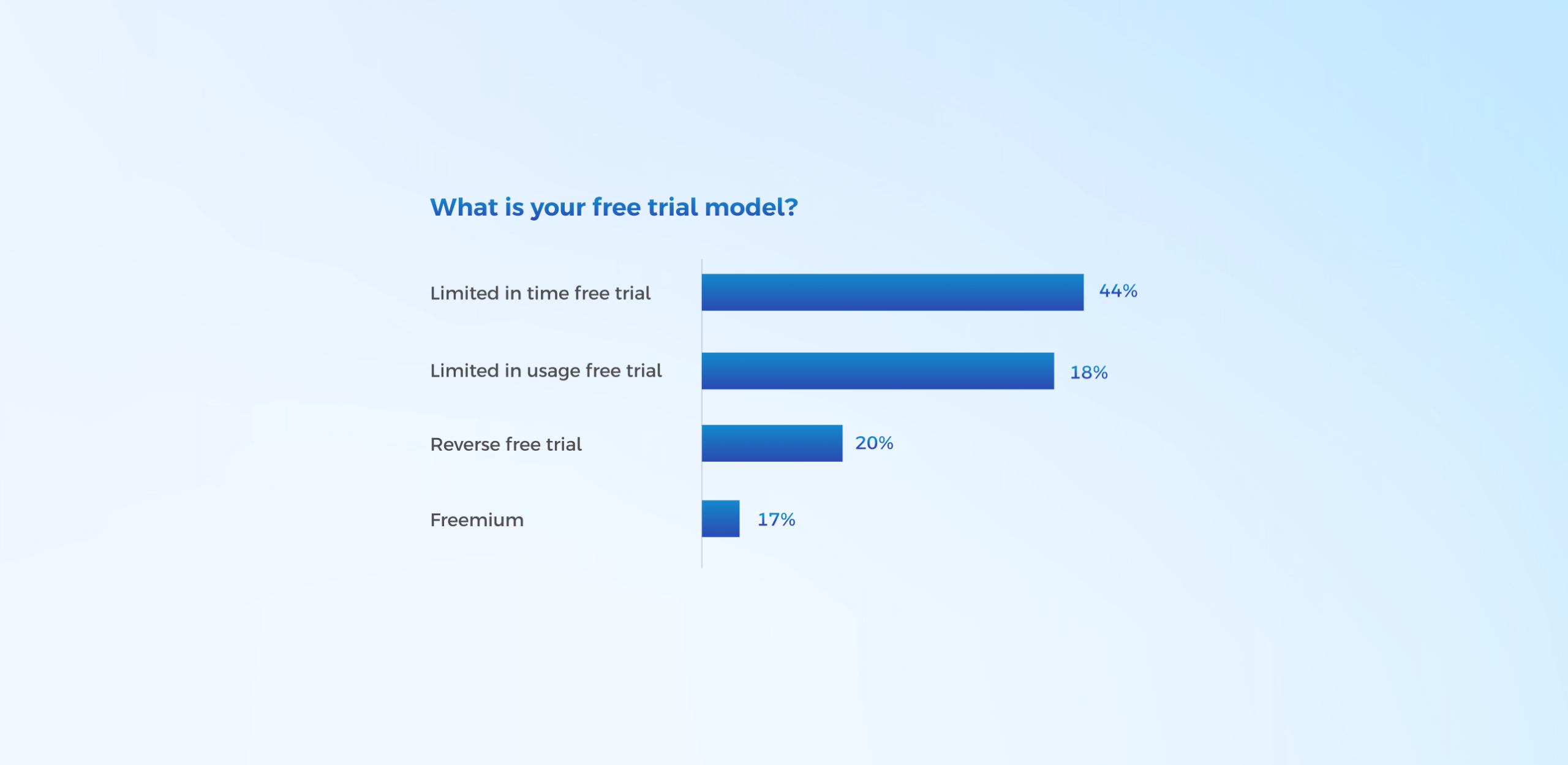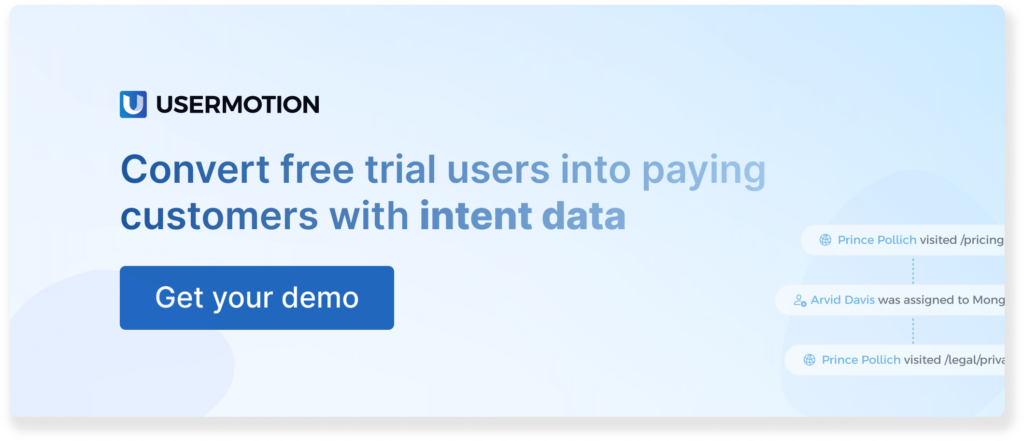We’ve been talking to over 50 SaaS companies and researching others that have integrated free trials into their products to understand how they convert free trials successfully and what insights we can gather from them. Get ready, as we share the 20 best practices for SaaS free trials, based on real feedback from these companies.
20 SaaS Free Trial Best Practices
For those who say “too long, didn’t read”, here are the key takeaways from these twenty best practices.
- There isn’t one great free trial conversion rate; they range significantly from 15% to 90%.
- Different products benefit from different types of trials: time-limited, usage-limited, reverse free trial, or freemium.
- Optimal trial length varies, with 18% offering 7 days, 42% offering 15 days, 33% offering 30 days, and 7% offering 3 months.
- Monitoring user behavior during trials is essential; 54% of companies track intent data while 46% rely on sales notes.
- Simplify the process for users to upgrade from a free trial to a paid plan to minimize friction.
- Create a sense of urgency with limited-time promotions or discounts during the trial period.
- Ensure the trial version is functional but holds back certain premium features to entice upgrades.
- Track which features are used most to highlight high-interest areas and guide marketing efforts.
- Set up automated triggers for specific actions indicating a user’s interest in purchasing.
- The time users spend on your platform during the trial is a strong indicator of engagement and likelihood to convert.
1. Don’t think there is only one conversion rate that is great
There isn’t one great free trial conversion rate. Every product has its own story, its own dynamics, and practices.
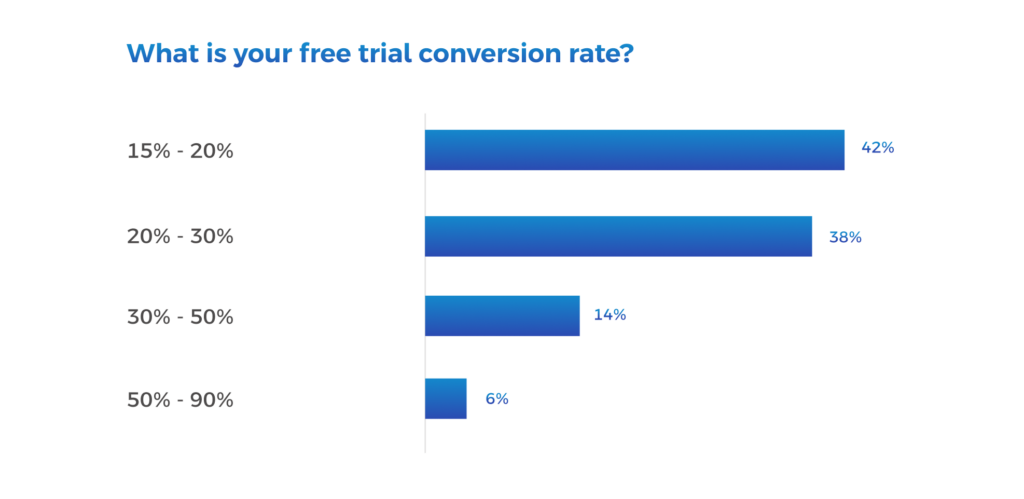
While the majority of companies state that their free trial conversion rate is between 15% – 30%, others have shared rates ranging from 30% – 90%.
These are all great rates for them, because each has its own story and context influencing these numbers. SaaS companies we have surveyed emphasized the importance of understanding that conversion rates can vary significantly based on the target audience and product complexity.
2. Understand what type of free trial you need
Different products benefit from different types of trials. Some companies have found that a limited feature trial works best, while others prefer time-limited trials.
Here are the four main types of free trial models:
- Limited in time free trial: Users have access to all or most of the product’s features for a limited period, typically ranging from 7 to 30 days.
- Limited in usage free trial: Users have access to the product with usage restrictions, such as limited access to certain features or a cap on usage metrics (e.g., number of projects, amount of data).
- Reverse free trial: Users start with full access to the product for a limited time, and after the trial period, they are downgraded to a free plan with limited features.
- Freemium/free plan: Users have access to a free version of the product with limited features or usage indefinitely, with the option to upgrade to a paid version for additional features and capabilities.
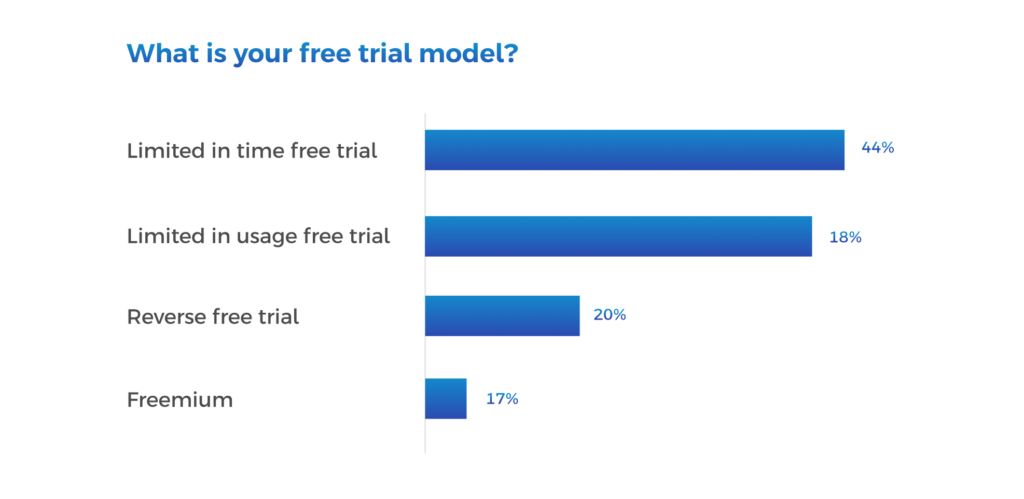
According to insights from companies surveyed, about 44% offer a time-limited free trial, 18% offer a usage-limited free trial, 20% use a reverse free trial model, and 17% use a freemium model. It’s crucial to determine which model aligns with your product and user behavior to maximize conversion rates
3. If you offer a limited free trial model, decide the best timeframe
Several companies mentioned that the optimal trial length can vary. Too short, and users may not fully grasp the product’s value; too long, and they might not feel the urgency to convert. Experiment to find the sweet spot for your audience.
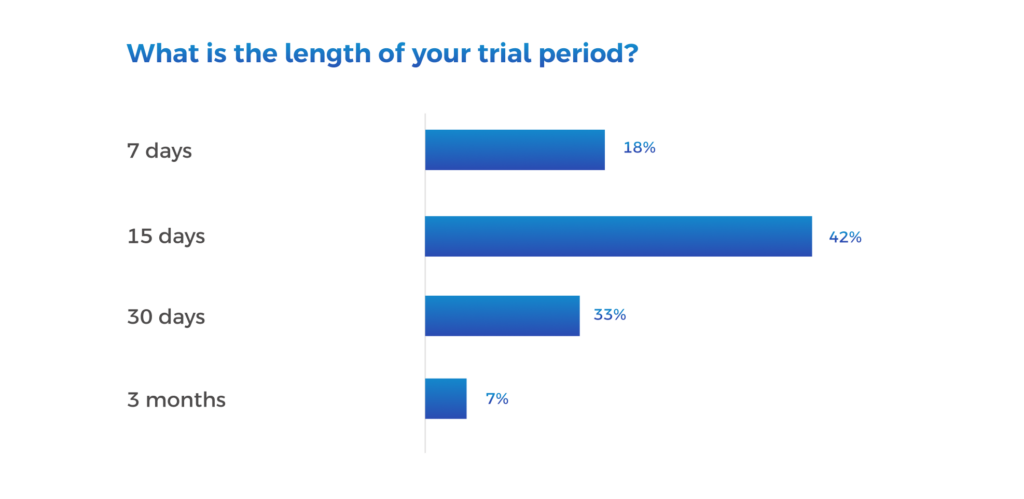
Data from over 50 SaaS companies show that 18% offer a 7-day trial, 42% offer a 15-day trial, 33% offer a 30-day trial, and 7% offer a 3-month trial.
4. Track free trial customer behaviors to understand intent
Almost the half of the companies have shared that they monitor actions like feature usage and activity can provide insights into a user’s buying intent.
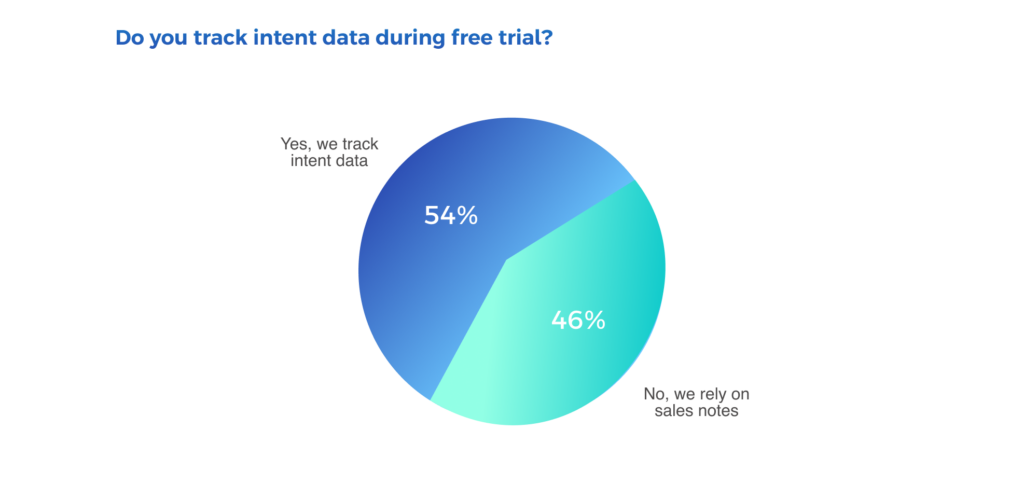
According to our research, 54% of SaaS companies track intent data during free trials by using intent data tools like UserMotion, while 46% rely on sales notes to understand user behavior and intent.
5. Make it easy to upgrade from a free trial to a paid plan
Simplify the process for users to upgrade from a free trial to a paid plan. Companies stress the importance of having a clear interfaces for conversion, minimizing any friction that could stop potential customers.
6. Create a sense of urgency with limited-time offers
Some SaaS companies create urgency by offering limited-time promotions or discounts during the trial period. This tactic can incentivize users to convert before the trial ends.
7. Ensure the trial version is functional, but not that much
While it’s important to showcase your product’s value, some companies recommend holding back certain premium features to entice users to upgrade. This strategy helps users see the benefit of the full product without giving away too much for free.
8. Monitor feature usage to identify high-interest areas
Tracking which features are used most during the trial can highlight what aspects of your product resonate most with users. This information can guide both your marketing efforts and product development.
9. Set up triggers for key actions indicating buying intent
Companies have found success in setting up automated triggers for specific actions that indicate a user’s interest in purchasing. These might include reaching a usage milestone or engaging with key features.
10. Analyze time spent on the platform to assess engagement
The amount of time users spend on your platform during the trial can be a strong indicator of their engagement and likelihood to convert. High engagement often correlates with a higher chance of conversion.
11. Highlight key features that correlate with higher conversion rates
Identify and highlight the features that are most likely to drive conversions. Companies suggest focusing your onboarding and user education efforts on these high-value features to ensure users experience their benefits early on.
12. Track interaction with support resources as a signal of intent
Interactions with support resources, such as live chat or help centers, can indicate a user’s intent to purchase. Companies recommend monitoring these interactions closely to identify and nurture high-intent users.
13. Simplify the trial sign-up process to attract serious users
A cumbersome sign-up process can deter potential users. Companies advise making the trial sign-up as simple as possible to ensure you capture serious prospects without unnecessary barriers.
14. Implement demo content to demo accounts
Providing demo content within trial accounts helps users quickly understand your product’s value. Companies have shared that this practice can accelerate the user’s journey from trial to purchase.
15. Set up a cross-functional team
Having a dedicated team that includes members from sales, marketing, and product can help ensure a cohesive trial experience. This team can work together to identify and act on user behavior signals more effectively.
16. Implement behavior-based onboarding
Tailoring the onboarding process based on user behavior during the trial can increase engagement. Companies recommend using behavior-based triggers to guide users through relevant features and workflows.
17. Collect feedback from trial users
Actively seeking feedback from trial users can provide valuable insights into potential roadblocks and areas for improvement. Companies suggest using surveys and direct feedback channels to gather this information.
18. Personalize onboarding based on user behavior
Implementing personalized onboarding flows tailored to how users interact with your product can significantly boost trial engagement. Companies have shared that delivering tailored experiences, like guided walkthroughs or specific feature highlights based on user actions, helps users see immediate value, driving higher conversion rates.
19. Use gamification
Incorporating gamification elements into your trial can make the experience more engaging. Companies have found that rewarding users for completing certain actions can drive deeper engagement and increase the likelihood of conversion.
20. Put a countdown to show the expiration date of the trial period
Adding a visible countdown to the trial expiration date creates a sense of urgency. Companies report that this simple tactic can remind users of the limited time they have to experience the product, encouraging them to make a decision before the trial ends.

